We are RVing to the Grand Canyon. Or at least two weeks ago, we were RVing to the Grand Canyon by crossing the Mojave Desert in September. It was very hot. Our goal was to visit the Grand Canyon in September, after the summer heat had passed and the temperatures had cooled. Other than crossing the Mojave Desert in the heat and a few issues discovered along the way, it was terrific.
Without our tow car.
I mentioned that on our current trip to the Grand Canyon in our RV, we are without a car. It is sitting alone, awaiting repairs in San Diego. We are RVing without a vehicle, except for the occasional help from friends, and we visited the Grand Canyon without our car. Being carless isn’t too bad, but without our friends, it would be difficult. When we return to San Diego, we will have to find a way to repair the car. The dealer’s estimate for our car repair was TEN-THOUSAND dollars. If you didn’t see that in-depth article, here is a link. Our car quit at the worse possible time.

Overall, except for a short drive in Bill and Kathy’s car, we didn’t need our tow car either on the way to or while at the Grand Canyon.
It was very hot in the Mojave Desert.
We launched across the Mojave Desert on Sunday, September 14, from San Diego to Yuma. That afternoon, the temperature hit 100 degrees. Yuma is situated at the southern end of the Colorado River and is known for its unbearably hot summers and very mild winters. On the way to Yuma, I was running the air conditioning, operating off the battery and my inverter. At our RV park, I knew we could recharge the batteries and run the air conditioning overnight and be at 100% charge by morning.
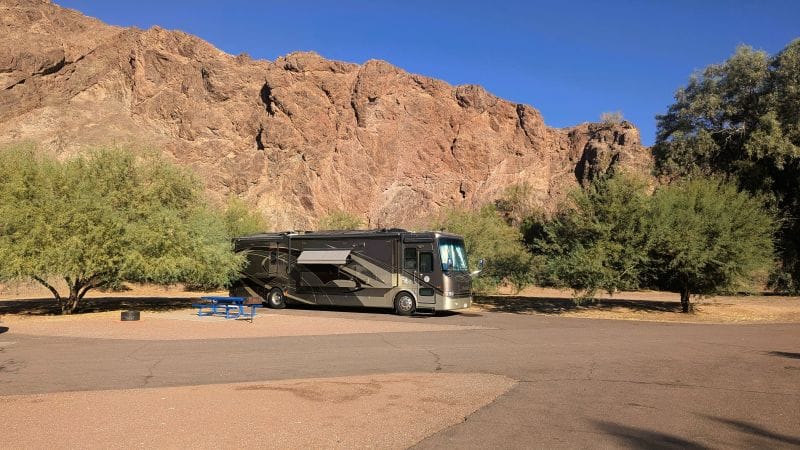
The RV park in Yuma had plenty of open spaces. I counted four RVs parked in about a hundred spaces. The La Quintas RV Park is large and flat, meeting every need for $33 per night. As soon as we arrived, I turned both air conditioners on at full load. It seemed like we used more than $33 worth of electricity to keep the RV cool enough for sleeping.

Northbound along the Colorado River
The next morning, we headed north along the Colorado River to a wonderful little State Park on the river. River Island State Park is different from many of the places we camped, but we had never been there in the summer, including September. Besides electricity to run our air conditioners, the State park has a massive rock wall to the west. This meant that, starting in the afternoon, we camped in the shade of this rock wall and didn’t have to endure the hundred-degree heat and the additional heat from the afternoon sun. I wouldn’t say it was comfortable until our morning walk, but it was bearable nonetheless.

Again, between Yuma and River Island State Park, I was running our air conditioners, which were operating off the batteries, to keep the RV cool for the journey. Again, we recharged the battery back to 100% by morning. (I will let you know later why I am detailing the air conditioning in the story).
We finally found some cooler temperatures.
It was another two hundred miles before we finally found some cooler weather in Williams, Arizona. This time, instead of running the air conditioning from the batteries, we used the generator to power our air conditioners while driving. The difference was that we didn’t have electricity for our two-night stay in Williams. I also wasn’t sure that we would be able to recharge our batteries with our solar panels in Williams. Williams is located at an elevation of 6,765 feet, which is why we experienced cool temperatures, unlike our trip across the Mojave Desert and along the Colorado River.

About the Kaibab Lake campground
We really enjoyed our two days at Kaibab Lake campground. As I mentioned, it is at an elevation of almost 7000 feet and was about thirty degrees cooler than along the Colorado River. The campground is situated in a pine forest, with numerous tall trees. The southern loop of the campground is further from the lake, but the sites are mostly flat.

The closer you get to the lake at Kaibab Lake campground, the campsites become nearly unusable because, although they have graded and paved the sites, they have made no effort to make them flat. We didn’t visit the area with sites 1-29, so we cannot advise you about them. While not all sites will work for large RVs, I recommend the sites in the southern loop. Sites 45-74 seem to be the best for large RVs. Solar panels don’t work well at most sites in Kaibab Lake Campground due to the trees.
At the Grand Canyon
After departing Williams, we turned north and camped along the south rim of the Grand Canyon for four nights. Our first three nights at the Grand Canyon were spent in the Mather Campground, again without electricity or water, followed by one night at the Grand Canyon Trailer Village, which offered full hookups.
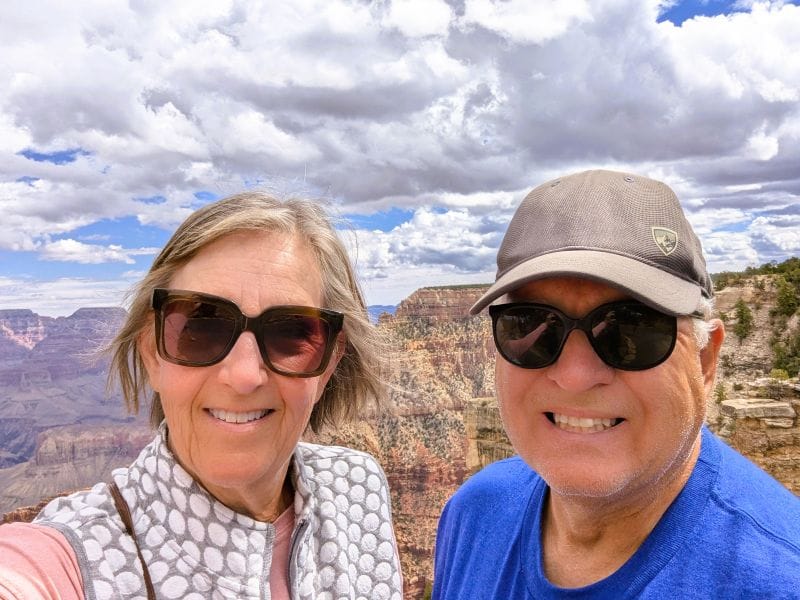
The Grand Canyon was incredible.
I may have visited the Grand Canyon when I was a young child, but I don’t remember. When my children were young, I had the idea of camping along the Colorado River, but when we arrived, it was way too hot, even though I think it was only May. So, we kept driving and went to the North Rim of the Grand Canyon. I don’t think they remember it, but it was great.

I was saddened to learn that the North Rim of the Grand Canyon was closed this year due to the extensive damage from the Dragon Bravo Fire. The fire consumed the lodge and also closed the most popular Bright Angel Trail that connects the north and south rims. The trail is only 9.3 miles long, but from the south rim to the Colorado River, it descends approximately 2,500 feet to the Colorado River and then climbs 3,500 feet to the north rim. Some people make a day of the trip, running to the north rim and back. Not me.
About the Mather Campground at the Grand Canyon
RV length at the Mather Campground is restricted to 30 feet, and many campsites are smaller, but some campsites are much bigger. I measured one campsite (which was closed and used as an emergency-only site) at a length of more than 150 feet. The road and sites are paved, and the route winds through the forest at an elevation of 7,000 feet. It is a large campground with 327 sites spread across multiple loops.

When it was time to check in at our site, we drove right past the ranger station and straight to our assigned spot. I didn’t want a quiz about how big our RV was, and at Mather, the ranger station was off to the side, making it easy to skip. I walked back to the ranger station that afternoon to check in without our RV.
One of the problems I have with the Mather Campground is that the staff didn’t measure the sites accurately; instead, they imposed a blanket restriction on the permissible RV size. The second problem I have at Mather is that the management closes many campsites without reason. These include many of the best campsites at the campground. This makes it frustrating to make reservations.

At the Grand Canyon, we mainly had shade at our campsite, but some sun was available for the solar panels, and we had to supplement the solar power with the generator to keep the batteries charged. The generator hours were very restricted, and the volunteer hosts stopped by to remind me about the generator hours, which were soon to end; however, they didn’t mention our oversized RV. Another thing we discovered during our visit is that generators are not permitted in sites 266-314.
It was my mistake not making reservations at the Mather Campground for four days, and that is why we ended up at the Trailer Village RV Park at the Grand Canyon.

About the Trailer Village RV park at the Grand Canyon
While we had full hookups at Trailer Village and were able to do laundry and dump our tanks, it was a real pain because the electricity voltage was often too high. This triggered our Power Watchdog Electrical Management System, causing frequent power failures. The Power Watchdog protected our RV from voltage-related damage.
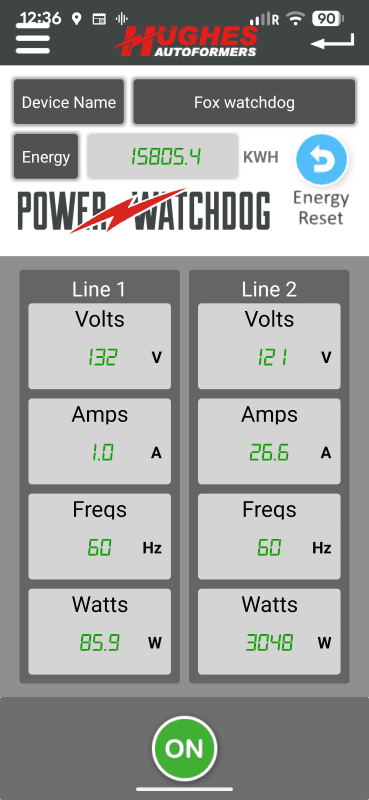
While dry camping at the Mather Campground and using the generator, I discovered something was wrong with my inverter/charger while running our generator. It was working fine, recharging our batteries from the generator to a point. Then it would reduce the charge amperage, continuing to charge, but at a much slower rate than before.
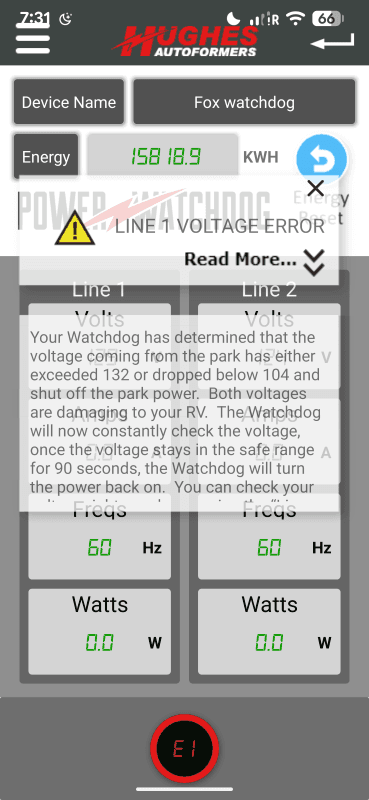
About that stuff about our air conditioners
Running our air conditioner using the power from our batteries worked fine. Charging our batteries from our solar was and is still great. Running our generator to operate our air conditioners worked fine. While at Trailer Village, we could also run our air conditioners from the external power when it was working correctly. Why was the charge amperage of my generator dropping both while running and while on shore power? This was a problem that wouldn’t fix itself, and the problem had to be in the inverter.

Going to the Albuquerque Balloon Fiesta
The real reason for the trip across the Mojave Desert, despite the heat, was not to visit the Grand Canyon, but rather to attend and camp at the Albuquerque Balloon Fiesta. We got lucky in January (2025) and picked up a nice place to park at the Balloon Fiesta. (Really, we are parked in a large dirt lot just north of the launch field.) This trip wouldn’t wait for our car repair after our car quit.
So after we leave the Grand Canyon, we will be camping without external power at the Albuquerque Balloon Fiesta for ten days. This creates challenges in multiple areas. We will be using our solar panels to recharge our batteries, and we need our inverter to run our RV’s electrical systems. I have one week to fix it or at least make it functional enough to run our refrigerator during the Albuquerque Balloon Fiesta. Our RV inverter is a single point of failure, and it failed. I will let you know next week how things are working next week.
Please subscribe and join us on our journey.
We will add you to our email list and send you updates on a weekly basis. Here is a link. Subscribe
About our links
As you are aware, our blog’s income is zero, which enables us to remain independent and tell the truth. We do not get income or commissions. No, we don’t make paid endorsements. We don’t make recommendations; instead, we will tell you what we like (or dislike). The links are only provided as a quick reference to help our readers.
Links
La Quintas RV Park, Yuma, Arizona
River Island State Park, Parker, Arizona
Kaibab Lake Campground, Williams, Arizona
Mather Campground, Grand Canyon National Park
Trailer Village, Grand Canyon National Park
Power Watchdog Electrical Management System
About comments
We love seeing your comments, but please note that they are not automatically posted. I get about twenty spam comments every day, and thus, I have to turn off automatic comments. I read and then personally publish every comment to protect the blog, keep it on topic, and maintain its authenticity. You will not see your comment right after you hit submit. Sorry for the delay in publishing your comments. Some comments come from personal emails and Facebook. Please know that we would love to hear from you.

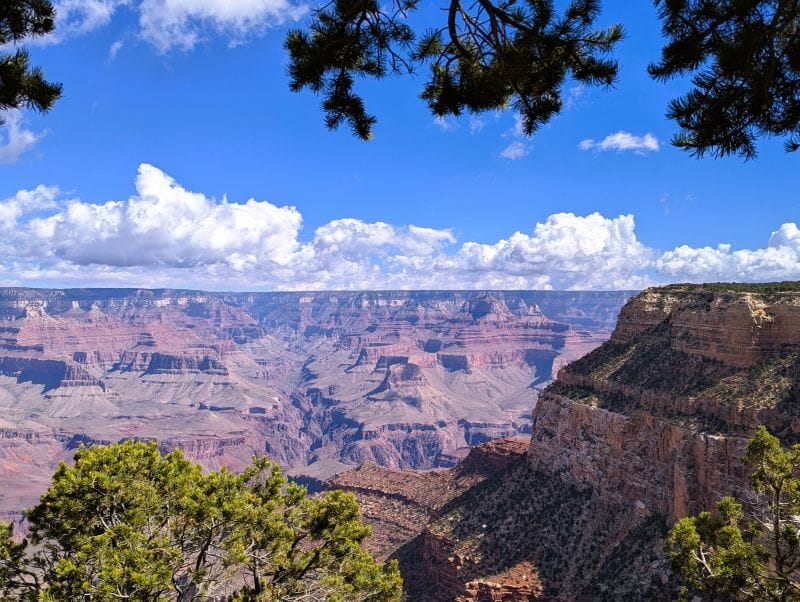
You guys are living the dream. We love watching your travels and reading everything Scott writes.
We loved the Grand Canyon when we went in our RV, but we stayed at a military campground about 40 minutes away, which ended up being very dusty.🤣 We had our old dog with us, and we took her for a walk along the rim trail. The elk got pretty close and smelled horrible! Balloon festival sounds awesome. Happy Trails to both of you.
The readings from your inverter are very strange. From the remote control, I can see you have a Magnum inverter. I hope you get it fixed before the Balloon Fiesta. I’m also interested in your backup plan, in case you’re unable to repair it.
Pingback: Camping at the Albuquerque Balloon Fiesta - FoxRVTravel